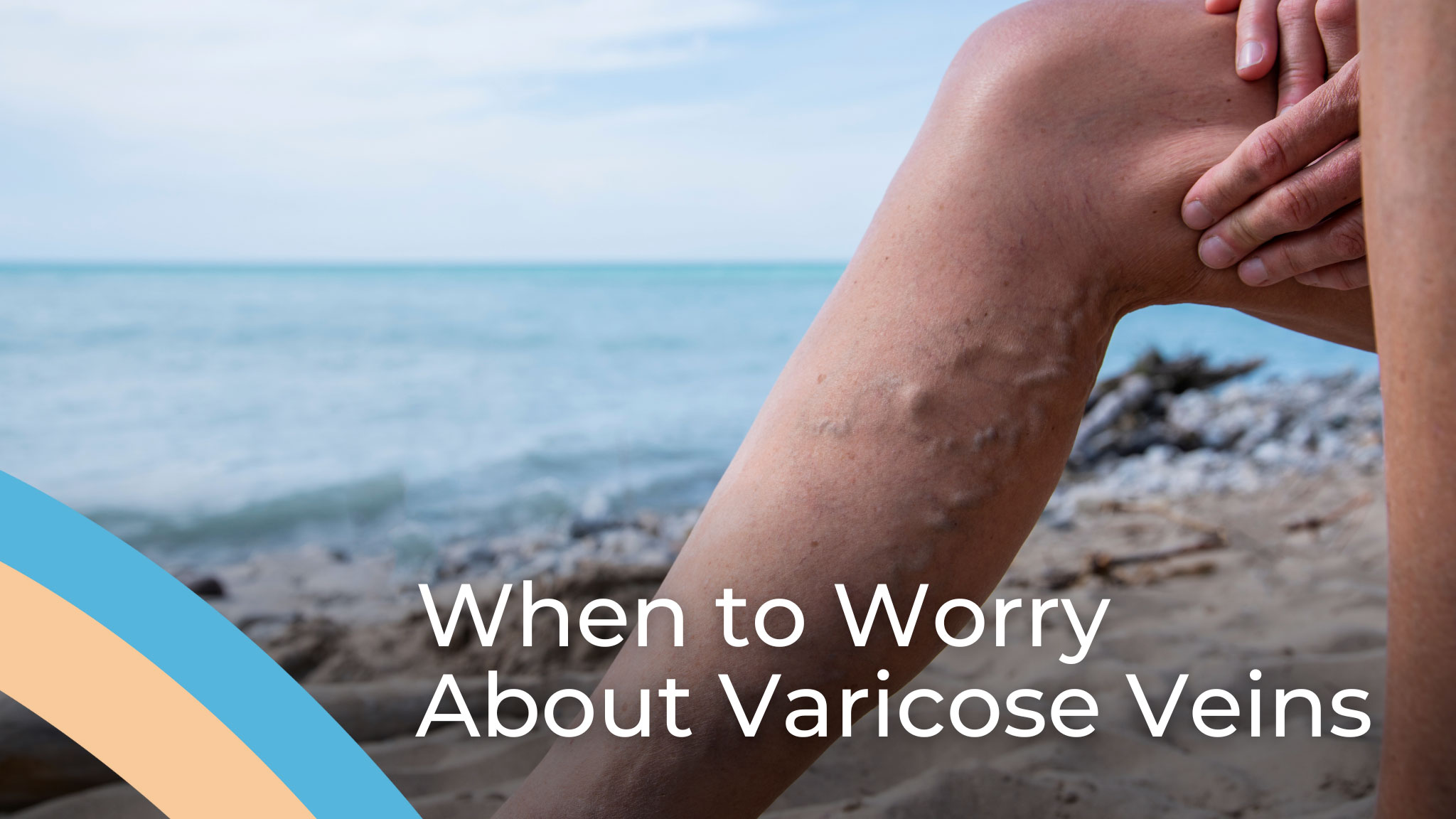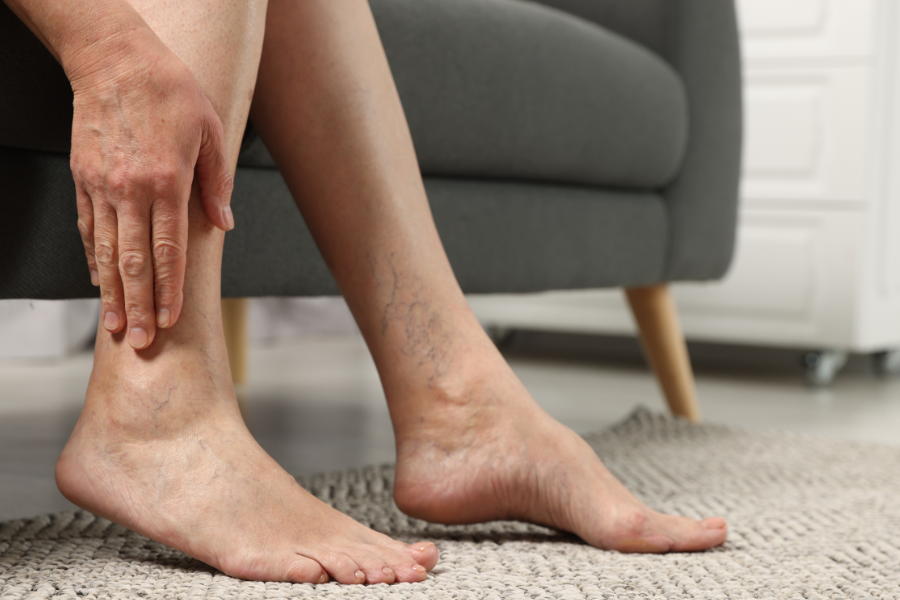- What are Varicose Veins?
- Signs and Symptoms of Varicose Veins
- Complications from Varicose Veins
- Seeking Help for Varicose Veins
Do you have varicose veins? Some varicose veins are normal and affect about 23% of American adults. However, varicose veins may require treatment that extends beyond cosmetic concerns. So, when should you worry about your varicose veins?
At St. Johns Vein Center, we will help you understand varicose veins, including when to be concerned, potential complications, and the importance of seeking professional advice.
What Are Varicose Veins?
Varicose veins are enlarged, twisted veins that usually appear on the legs and feet. They are often blue or purple and can bulge out, causing discomfort and self-consciousness. While generally not severe medical issues, they may indicate underlying circulatory problems.
Risk Factors for Varicose Veins
Varicose veins are a common condition that can be influenced by various factors that increase the likelihood of their development. Some key factors include:
Genetics: A family history of varicose veins can significantly increase the risk. Inherited weaknesses in vein walls and valves can make individuals more prone to the condition.
Age: As we age, the risk of developing varicose veins rises. Aging causes natural wear and tear on vein walls and valves, making them less efficient.
Gender: Women are generally more susceptible to varicose veins than men. Hormonal changes during pregnancy, menstruation, and menopause can weaken veins.
Obesity: Excess body weight places additional pressure on veins, impeding blood flow. Obesity can strain vein walls and valves, increasing the chances of varicose veins.
Sedentary Lifestyle: Lack of physical activity can hamper proper blood circulation. Prolonged periods of sitting or standing can hinder blood flow from the legs to the heart.
Pregnancy: The increased volume of blood during pregnancy can put a strain on veins. Hormonal changes and pressure on the pelvic region contribute to the development of varicose veins.
Occupation: Jobs that involve prolonged periods of standing or sitting can elevate the risk. Constant pressure on veins due to work-related activities can contribute to vein dilation.
Medical History: Conditions like deep vein thrombosis (DVT) can damage veins and increase the risk of varicose veins. Previous surgeries or injuries affecting veins can also be contributing factors.
Hormonal Changes: Hormonal fluctuations, such as those caused by birth control pills or hormone replacement therapy, can affect vein elasticity. These changes can weaken vein walls and valves, making them more susceptible to dilation.
Sun Exposure: Prolonged exposure to the sun’s ultraviolet (UV) rays can weaken skin and vein structure. Weakened skin and veins may contribute to the development of varicose veins.
Signs and Symptoms
While varicose veins are generally considered harmless, it’s important to pay attention to signs and symptoms that might warrant medical attention. These indicators can help identify potential issues and guide appropriate actions:
Pain and Discomfort: Varicose veins can cause aching, throbbing, and a feeling of heaviness in the legs. If these symptoms persist or worsen, it’s time to consult a vein specialist.
Skin Changes: Skin around varicose veins might become discolored, dry, or itchy. Any skin changes, especially open sores or ulcers, require prompt evaluation.
Blood Clots: If you notice swelling, redness, and warmth around a varicose vein, it could indicate a blood clot. Seek medical help immediately if you suspect a clot.
Complications of Varicose Veins
While varicose veins are typically considered a benign condition, there are instances where they can lead to severe complications. It’s important to be aware of the potential risks associated with varicose veins to address any issues promptly and mitigate any adverse outcomes.
Deep Vein Thrombosis (DVT): Untreated varicose veins can increase the risk of DVT, a condition where blood clots form in deeper veins. This can be life-threatening if a clot dislodges and travels to the lungs.
Ulcers and Bleeding: Long-standing varicose veins can lead to skin ulcers near the ankles. These ulcers can be painful and challenging to treat. Additionally, varicose veins that rupture can cause bleeding.
Diagnostic Procedures
One of the key diagnostic methods we employ is ultrasound imaging. This non-invasive technique allows our experts to visualize your veins in real time, providing a clear picture of the extent and nature of your varicose veins. By doing so, we can accurately assess the severity of the condition, identify potential complications, and tailor a treatment plan that aligns with your specific needs.
Treatment Options
No two cases of varicose veins are the same, and that’s why our approach to treatment is as diverse as the conditions we encounter. Depending on the severity of your varicose veins, our range of treatment options span from lifestyle adjustments and compression stockings to more advanced, minimally invasive procedures.
Sclerotherapy, a time-tested procedure, involves injecting a specialized solution into affected veins, causing them to close and gradually fade from view. On the other hand, endovenous laser treatment utilizes cutting-edge technology to target and close off problematic veins, all from within the comfort of our clinic.
Varicose veins are not just a cosmetic concern. They can also be a sign of underlying circulatory problems. While most cases are manageable with lifestyle changes and medical interventions, paying attention to problematic symptoms is important to your overall health.
At St. Johns Vein Center, we are dedicated to helping you understand and manage varicose veins for better overall health and well-being. Feel free to schedule an appointment with our experienced vein specialists if you have any concerns.







